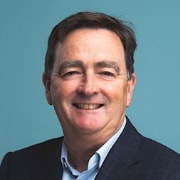In recent years, diversity and inclusion initiatives have grown by leaps and bounds – but there’s still work to do.
Although there’s been a clear focus on gender equality, Indigenous Australians, other minorities and LGBTQ+ folks in particular still face issues with discrimination in the workplace.
To me, this stems from a misunderstanding of the symbiotic relationship between diversity and inclusion.
Here, I share my thoughts on what it takes to create a truly diverse and inclusive culture, and how we’re working towards this at Arcadis.
Diversity may come first, but inclusion must follow
There’s been a focus on diversity in most industries for years, but there’s another, equally important, side to the equation: inclusion.
Diversity without inclusion is like having a Tesla sports car with an uncharged battery - the potential for something great is there but it is yet to be fully realised. The reality is, it's no good having a diverse workforce if your culture is not inclusive.
So, it’s not just about cherry-picking certain groups through diverse hiring practices. It’s just as important to foster a safe workplace in which everyone feels they belong.
This is where inclusion comes into play – and it’s why developing a culture with measures for both diversity and inclusion is so critical.
So, what does inclusion look like in practice?
It’s an environment where people feel comfortable sharing their opinions and where there’s fairness in reward and recognition. And, importantly, it’s about enabling people to make a meaningful contribution to all aspects of the business. In my opinion, this is a crucial step in the right direction.
Embedding inclusion into a business’ ethos
Building an inclusive culture starts with recognising the need and having the conversation at the senior level. This might include naming inclusion as one of your organisation’s key values and identifying inclusion initiatives similar to those I mentioned earlier, such as:
- Creating a safe and open environment
- Ensuring reward and recognition is fair
- Focusing on creating a ‘belonging’ culture
- Empowering people to meaningfully contribute to the business
From here, it’s about asking “What sort of culture are we striving for? What actions will we take to achieve that and make sure our leaders are modelling the right behaviour?”
Setting targets and metrics for success – and nominating a D&I steering group made up of a cross-section of employees to track these – can be beneficial in staying accountable for your progress as an organisation.
What we’re doing at Arcadis
In recent years, we’ve made strides in ensuring diversity and inclusion are central to our hiring and workplace practices.
When recruiting for senior positions, for example, we undertake psychometric testing to help us better understand a candidate’s attitude to inclusion. We also conduct unconscious bias training and regularly invite feedback from staff on whether or not they feel their managers are modelling the right behaviours and encouraging inclusion.
Many workplaces fail to adequately ‘measure’ inclusion in their business and this can hinder their progress. By frequently and actively seeking feedback with our quarterly staff surveys, we are quick to pinpoint areas that need attention.
Additionally, we partner with Engineering Aid Australia (EAA), a not-for-profit organisation that supports Indigenous high school students in going to university, studying engineering and becoming professional engineers.
Over 800 people have gone through the programme with roughly 150 becoming engineers, and as Chair of EAA, I’m proud to say we’ve hired several interns and graduates as a result of this programme.
Mastering diversity and inclusion is a work in progress for most organisations, and ours is no exception. But with collective efforts like these, I’m confident we’re on the right path.



